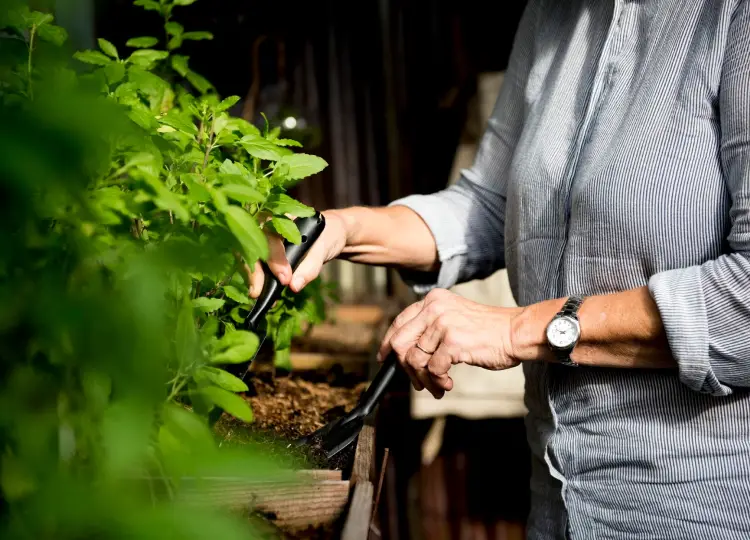Image by rawpixel.com on Freepik
In the midst of bustling cities and concrete jungles, the idea of growing your own food might seem like an impossible dream. However, with the rising interest in sustainable living and the benefits of homegrown produce, urban gardening has become a popular and practical solution. This article will guide you on how to start urban gardening and grow your own fresh, organic produce, even in the smallest of spaces.
The Benefits of Urban Gardening
Before we dive into the practical aspects of urban gardening, let's explore why it's worth considering:
1. Fresh, Healthy Produce
Growing your own food ensures you have access to fresh, pesticide-free fruits, vegetables, and herbs. You'll know exactly what goes into your food, promoting a healthier diet.
2. Sustainable Living
Urban gardening reduces your carbon footprint by reducing the need for transportation of produce from distant farms. It also contributes to improved air quality and urban greenery.
3. Cost Savings
Investing in an urban garden can lead to significant cost savings over time, as you'll reduce your grocery bills and have a renewable source of food.
4. Stress Reduction
Gardening has therapeutic benefits, helping to reduce stress and improve mental well-being. It's a great way to connect with nature in the heart of the city.
5. Sense of Accomplishment
Watching your plants grow and harvesting your own food provides a sense of accomplishment and satisfaction that's hard to beat.
Getting Started with Urban Gardening
Now, let's explore the steps to start your own urban garden:
1. Assess Your Space
Determine how much space you have available for gardening. Whether it's a small balcony, a sunny window sill, or a tiny backyard, there are options for every space.
2. Choose Your Plants Wisely
Select plants that are well-suited to your space, climate, and the amount of sunlight available. Some great options for small spaces include:
- Herbs like basil, parsley, and mint
- Cherry tomatoes
- Peppers
- Salad greens (lettuce, spinach, arugula)
- Radishes
- Strawberries (they can be grown in vertical planters)
3. Gather Your Supplies
You'll need basic gardening supplies, such as:
- Pots or containers: Choose containers that have drainage holes to prevent waterlogged soil.
- Potting soil: Use high-quality potting mix suitable for your chosen plants.
- Seeds or seedlings: Depending on your preference and experience, you can start from seeds or purchase young plants.
- Watering can or hose: Ensure you can easily water your plants.
4. Plant Care
Here are some essential care tips for your urban garden:
- Watering: Be mindful not to overwater. Check the moisture level of the soil by sticking your finger an inch deep; if it feels dry, it's time to water.
- Sunlight: Ensure your plants get the required amount of sunlight. Most vegetables and herbs need at least 6 hours of sunlight daily.
- Fertilization: Use a balanced, slow-release fertilizer to provide essential nutrients to your plants.
- Pruning: Regularly prune your plants to encourage healthy growth and prevent overcrowding.
5. Pest Management
Urban gardens are not immune to pests, but you can manage them with natural methods. Use neem oil, soap sprays, or companion planting to deter common garden pests.
6. Harvesting
Harvest your crops when they're ripe to ensure the best flavor and quality. Herbs can be harvested frequently, while vegetables like tomatoes and peppers should be picked when fully mature.
Space-Saving Techniques for Urban Gardening
If you have limited space, consider these creative techniques to maximize your urban garden's potential:
1. Vertical Gardening
Utilize vertical space by growing plants on trellises, wall-mounted containers, or hanging baskets. Vining plants like cucumbers and beans thrive in vertical gardens.
2. Container Gardening
Containers come in various sizes and shapes, making them perfect for small spaces. Use window boxes, barrels, or repurpose items like old boots or buckets as plant containers.
3. Raised Beds
If you have a small backyard or terrace, consider building raised beds. These provide a defined growing area and better soil quality for your plants.
4. Indoor Gardening
Don't underestimate the potential of indoor gardening. Many herbs and dwarf vegetable varieties can be grown on windowsills, under grow lights, or in hydroponic systems.
Conclusion
Urban gardening is a rewarding and sustainable way to grow your own food, no matter how limited your space may be. With careful planning, the right plant choices, and attention to care, you can enjoy the fresh flavors of homegrown produce while contributing to a healthier planet. Start small, experiment, and watch your urban garden flourish as you develop your green thumb and create a vibrant oasis in the heart of the city.





